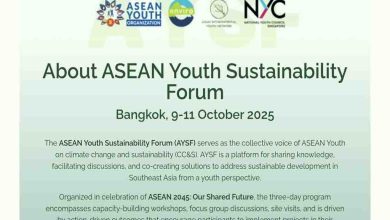India’s Indus Waters Treaty Suspension: A Critical Water Crisis for Pakistan
India’s Indus Waters Treaty suspension sends shockwaves through Pakistan’s water, agriculture, and energy systems. What are the implications of this historic decision?
The Indus Waters Treaty suspension by India marks a historic turning point for the region. For over 60 years, the Indus Waters Treaty stood as a beacon of cooperation between two nuclear-armed rivals, India and Pakistan. It ensured the uninterrupted flow of rivers that feed Pakistan’s agriculture, cities, and energy systems. But with India now placing the treaty in “abeyance,” citing Pakistan’s alleged inaction on cross-border terrorism, that stability has come under threat.
This development raises critical questions. What does the suspension mean for Pakistan’s future? Can its fragile water system withstand the fallout? And how will this affect food security, energy supply, and inter-provincial unity? This article explores the ground realities and long-term implications for Pakistan.
What Is the Indus Waters Treaty? A Foundation of Shared Survival
Signed in 1960 with the World Bank as broker, the Indus Waters Treaty is one of the most successful transboundary water-sharing agreements in history. It allocated three eastern rivers (Ravi, Beas, Sutlej) to India and three western rivers (Indus, Jhelum, Chenab) to Pakistan. These western rivers constitute nearly 80% of Pakistan’s freshwater supply.
While India retained limited rights for non-consumptive use (like hydropower), the treaty strictly prohibited large-scale storage or diversion that would affect Pakistan’s access. A joint Permanent Indus Commission was set up to monitor data, projects, and resolve disputes—turning water from a flashpoint into a rare source of stability in India-Pakistan relations.
Why This Suspension Is Different: Unilateral Action Against Treaty Terms
India’s announcement to suspend the Indus Waters Treaty doesn’t just test diplomatic limits—it disrupts legal and hydrological norms. The treaty has no provision for unilateral suspension. Under Article XII, changes require mutual consent. Yet India’s current move sidesteps this, calling into question the framework’s enforceability and opening a Pandora’s box of uncertainty.
The treaty’s strength lay not just in its text, but in its reliability. Farmers, engineers, and policymakers in Pakistan built entire systems on the assumption that these waters would continue to flow. The suspension undermines that core belief, threatening ripple effects across every sector.
Can India Stop the Water? Hydrological and Strategic Realities
India cannot immediately choke Pakistan’s rivers. The Indus, Jhelum, and Chenab carry massive volumes—especially during the monsoon. India’s infrastructure, like the Baglihar and Kishanganga dams, are run-of-the-river projects with minimal storage capacity. Trying to hold back these volumes would cause flooding in Indian-administered Kashmir.
However, during the dry season, when river flows shrink and timing becomes crucial, India could influence when water reaches Pakistan. Even small shifts in timing could delay sowing seasons, cut electricity output, or cause crop failures.
Over time, India might consider new storage or diversion infrastructure. But such projects face financial, environmental, and geopolitical hurdles—not to mention Pakistan’s warning that significant diversions would be viewed as acts of war.
Implications for Pakistan: Food, Energy, and National Unity at Risk
The Indus Waters Treaty suspension places Pakistan in a deeply vulnerable position:
1. Agriculture on the Edge
Pakistan’s irrigation system is among the world’s largest, but it’s heavily dependent on predictable river flows. Even a delay of days can derail planting schedules. Wheat, rice, and sugarcane—all critical crops—are at risk. A minor disruption can lead to food insecurity and rising prices.
2. Hydropower in Danger
Nearly a third of Pakistan’s electricity comes from hydropower, primarily generated through Tarbela and Mangla dams. Erratic upstream water releases could reduce generation capacity, leading to blackouts or expensive fossil fuel imports.
3. Inter-provincial Tensions
Water-sharing has long been a point of contention between Punjab and Sindh. Without a stable inflow, Pakistan’s provinces may enter a blame game, threatening national cohesion and peace.
4. Indus Delta at Risk
The delta is already shrinking due to reduced flows. Increased uncertainty could cause saline intrusion, affecting fisheries and thousands of coastal livelihoods.
A Precedent That Could Backfire on India
While India seeks to punish Pakistan, its move could undermine its own water diplomacy. India is a downstream country on other rivers, notably the Brahmaputra, where China holds the upstream position. By suspending a treaty, India sets a dangerous precedent—it could be used against it by China or others in future disputes.
Furthermore, India’s ambitions to be seen as a responsible global power could be tarnished. Unilateral treaty suspensions can weaken international trust, especially when water scarcity is a growing concern worldwide.
Historical Context: A Slow March Toward Breakdown
Tensions over the treaty have been building for years. In 2013, Pakistan won a legal case over India’s Kishanganga dam, securing environmental flow requirements. But the 2016 Uri attack marked a turning point. India froze talks, fast-tracked dam construction, and started linking water issues with terrorism.
By 2023, India formally requested to renegotiate the treaty, citing climate change and national interest. Pakistan refused. With both countries activating conflicting legal mechanisms—a neutral expert vs. Court of Arbitration—the treaty’s internal logic broke down. The current suspension is not an isolated event, but the climax of years of erosion.
What Comes Next: A Test of Regional Stability
This is a watershed moment—literally and metaphorically. Whether India’s move is tactical or permanent remains to be seen. What’s clear is that Pakistan must prepare for a new era of water insecurity.
Experts urge the Pakistani government to:
-
Modernize irrigation infrastructure to minimize losses
-
Diversify energy sources beyond hydropower
-
Establish diplomatic backchannels to avoid escalation
-
Invest in rainwater harvesting and alternative sources
-
Develop robust early warning systems for flow changes
Ultimately, this is not just about rivers. It’s about trust, cooperation, and survival in a climate-stressed future.
Conclusion: Water Cannot Be Weaponized Without Consequences
India’s Indus Waters Treaty suspension introduces uncertainty into a region already reeling from political instability, climate change, and resource scarcity. Water has been the one constant in India-Pakistan relations. Suspending that constancy risks plunging the region into deeper crisis.
The western rivers are not optional for Pakistan—they are essential. If diplomacy fails, the costs will be borne not in headlines, but in wheat fields, power grids, and parched communities.
It is now up to both nations to decide: will they choose escalation, or will they return to cooperation over their most precious shared resource?







